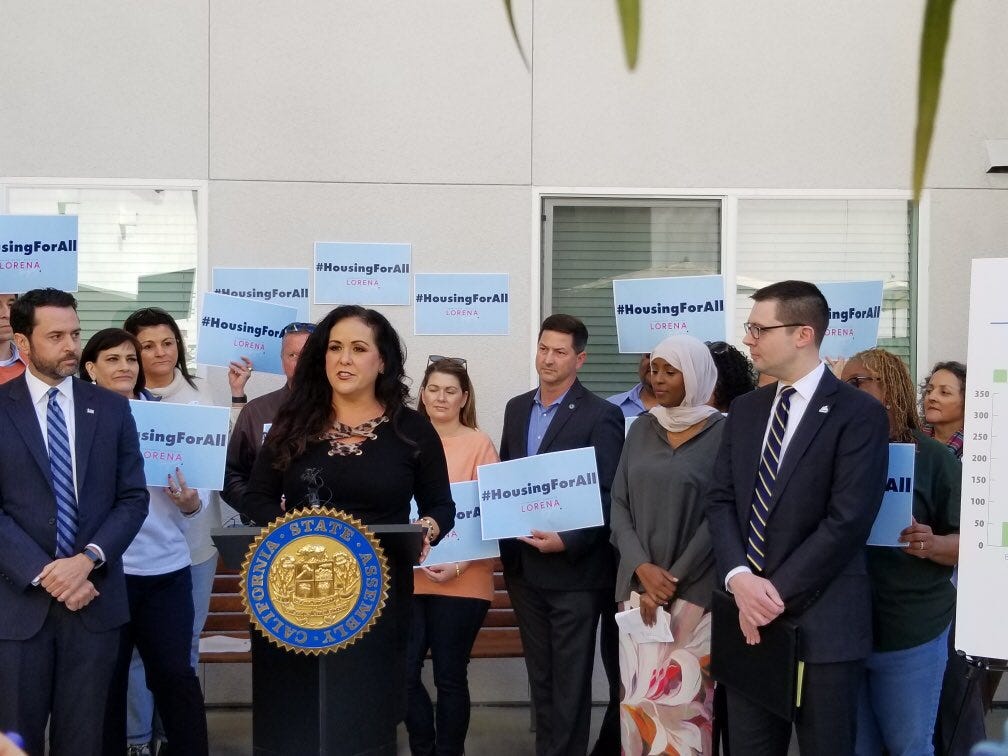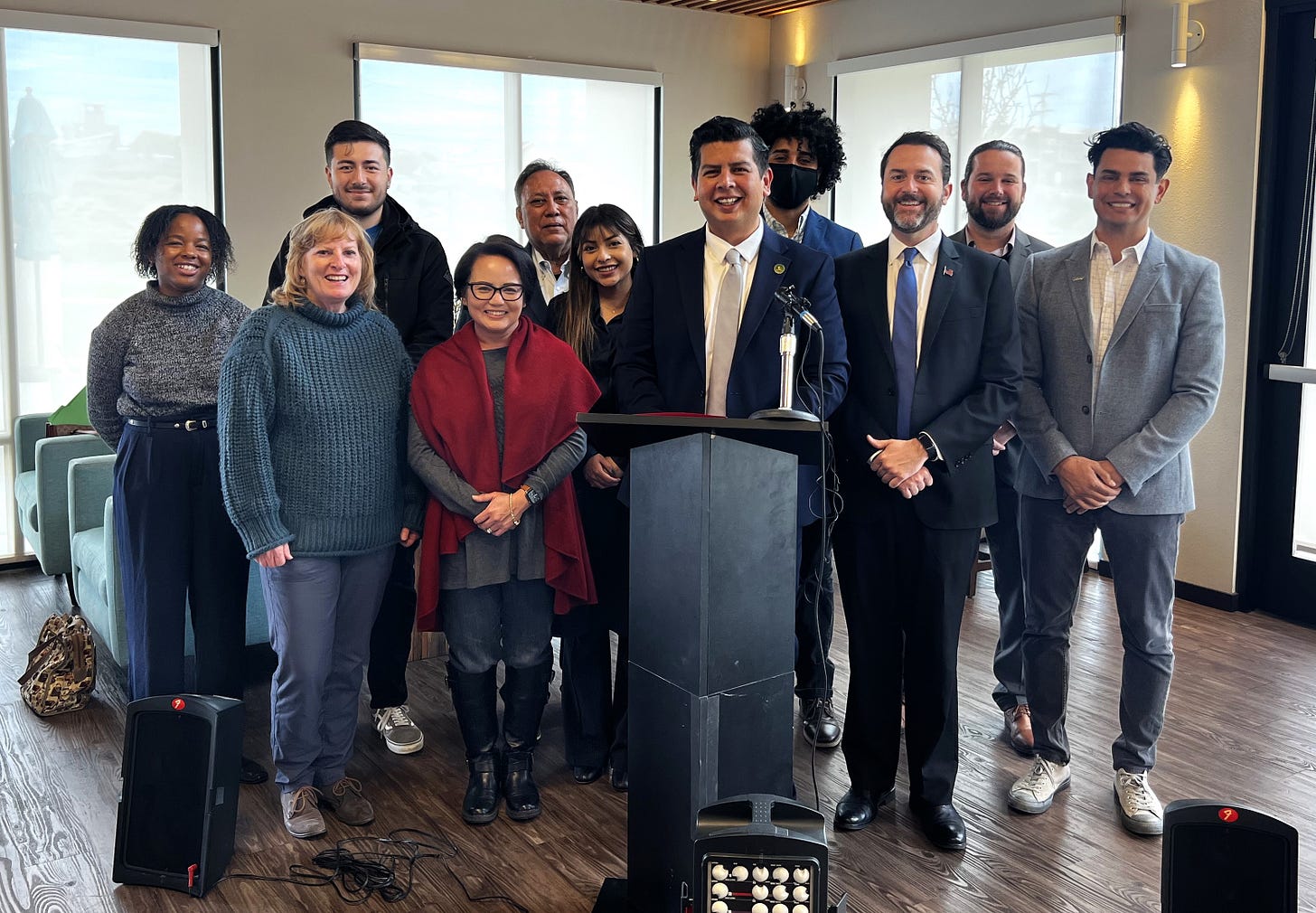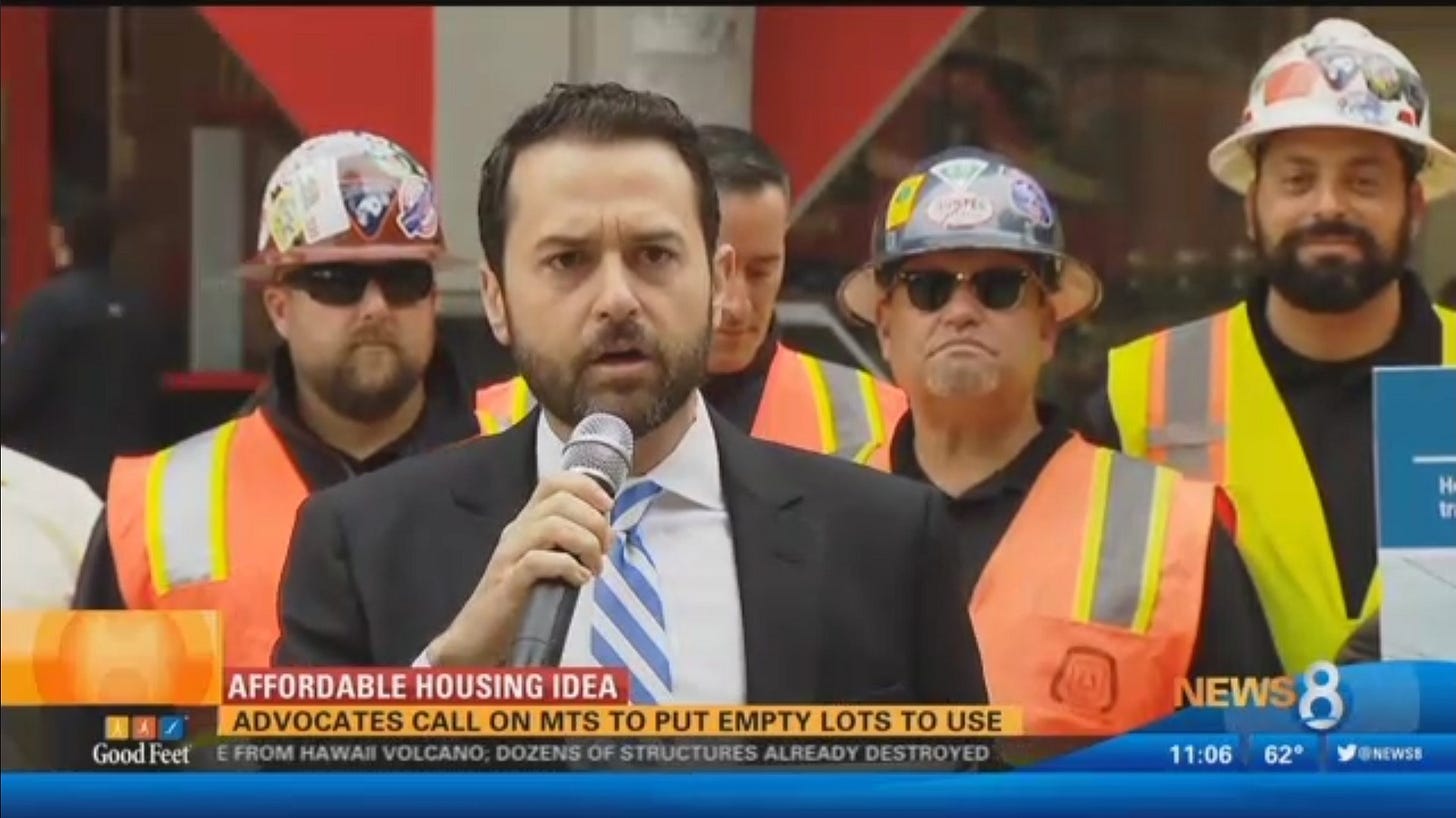Circulate San Diego Has Always Been an Abundance Organization
It's nice to finally have a name for what we are up to.
For the last decade, I have spent my professional life working at a nonprofit think tank called Circulate San Diego. We are an Abundance organization, and it is nice to finally have a name for what we are up to.
Circulate has been a leading advocate for progressive policies across a range of domains, including public transit, street infrastructure, and what we call sustainable growth. We often advocate for our issues to get a higher priority, or more funding. But often government already says they want to make our issues a priority, and even dedicate real funding to our causes. The bigger challenge can be to get governments to use their existing resources well, to actually produce the outcomes they say they want to achieve.
Our local and statewide campaigns are usually to reform some policy or practice that prevents governments from achieving the goals they already set out for themselves. We advocate for more housing of all types, more bike lanes and transit for every dollar spent, and for prioritizing outcomes over endless, unfair processes.
In recent years, there has been a growing number of intellectuals and political leaders taking this approach. They are calling it the Abundance Movement.
To a large extent, the Abundance Movement is an outgrowth of the pro-housing YIMBY movement. YIMBY is an acronym for “Yes in My Back Yard.” It is a play on the acronym NIMBY (Not in My Back Yard), a pejorative for someone who opposes socially useful activities, if it occurs near them. YIMBYs helped identify how regulatory structures can empower NIMBYS, and reduce the supply of socially valuable housing construction. They brought a generally progressive, pro-social critique to poorly constructed land use regulations.
Canonically, critics of overregulation have been conservative, or business interests. Burdensome regulations, it would be argued, could hurt some businesses. YIMBYs argued that bad regulations for housing would not just harm the interests of homebuilders, but of the end-users of their activity, the more sympathetic renters and homebuyers.
If you have not heard much about the Abundance Movement, that is about to change. There are a number of new entities organized around the concepts of Abundance. Funders are investing in new ventures. Several books are being released this spring, including Derek Thompson and Ezra Klein’s “Abundance,” Yoni Appelbaum’s “Stuck,” and Marc J. Dunkelman’s “Why Nothing Works.” Klein’s profile among liberals may well super-charge the issue beyond policy professionals, making the cause more mainstream.
Circulate’s first real engagement with the Abundance Movement was on the housing supply shortage, and our efforts to allow for more homes. As we devised our own advocacy model, and solutions to our local challenges, we saw organizations across the country come to similar conclusions about how to make progress in their own situations.
In the mid-2010s, we felt alone in San Diego testifying at hearings and writing op-eds calling for more housing construction. Local leaders like Congressman Scott Peters name-checked us for really shifting our local politics toward more housing.
We were not really alone. At the same time, advocates in the Bay Area were creating the foundations of the modern YIMBY movement. On the East Coast, Bill De Blasio was confounding many expectations by running as a progressive, while also promising to up-zone New York City.
Some of the parallels have been quite striking. Two years before California YIMBY and Senator Scott Wiener exploded onto the scene with Senate Bill 827, Circulate had won a 2016 campaign for a similar citywide up-zoning program at the City of San Diego. Like Senate Bill 827 and its successor Senate Bill 50, our policy created a programmatic up-zone for projects that met certain criteria, regardless of their underling zoning.
Only a year after San Diego’s enhancement, the City of Los Angeles released its own program called Transit Oriented Communities (TOC). I doubt either Senate Bill 827 or TOC were directly inspired by San Diego. Instead, the circumstances facing San Diego, Los Angeles, and the Bay Area were similar, and policy entrepreneurs devised similar Abundance-minded solutions. Instead of slogging through difficult individual upzones, programmatic citywide, or statewide up-zones enjoy a more favorable political economy, as I described in a scholarly publication. Those reforms succeeded in San Diego and Los Angles, and after the failure of Senate Bill 50, they passed statewide in other forms like Circulate-sponsored Assembly Bill 2345 and Assembly Bill 1287.
It was heartening to discover fellow travelers in the rise of the YIMBY movement. It gave a name and an intellectual framework to the types of solutions we promoted. That has been true also with the newer Abundance movement, which both describes and explains many of our efforts across other domains.
In recent years, we won reasonable time frames for community input on bicycle projects, to stop a practice of endless and costly delays. We launched a successful campaign to reform the community planning process, limiting its use as a pretext to stop needed projects. We critiqued sky-high costs for transit expansions, not because they would be "too nice," but because they had become so expensive they would not be built whatsoever.
We found allies in the academy like the Marron Institute, who are helping showcase how high construction costs prevent needed transit expansions. We found innovative funders like Transit Center, pushing for strategies like bus stop balancing, so our limited transit funds can do the most good for the most people.
For Circulate, Abundance only gets us so far. Abundance does not explain why we have pushed for funding safe routes to school projects over freeway interchanges. Not everyone feels the same way about the social value of freeway expansions, and their proponents probably want them to be built efficiently and abundantly. Abundance is a useful concept for helping to achieve goals, and it cannot substitute for the values and priorities necessary to set those goals.
In addition to my work at Circulate, I formerly served as an elected official, and worked on Abundance-minded green energy policy. Energy policy is an important topic in the Abundance discourse, but it is generally not within Circulate’s focus on mobility and urban land uses. We are not a full-service Abundance organization. Abundance is a way of applying solutions to problems, and it should not be thought of as a new omnicause. It is okay for organizations or policymakers to focus on their core issues, and apply an Abundance approach when it is useful to advance their work.
We have been a part of the Abundance Movement, even before it had a name. Like many others working in public policy, we found that certain barriers to progress were of government’s own making. To make a difference through government action, we discovered many areas where government itself needed to change.
Sometimes our local efforts have been lonely. We could feel like a Cassandra, arguing that long established models had outlived their purpose. Increasingly, the arguments we were making were being made by others elsewhere, and a chorus has arisen. An abundance of voices, as it were.







